

 The South African
The South African
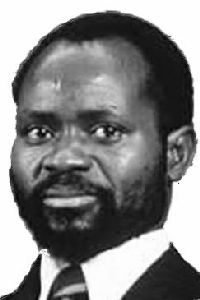
Samora Machel
Introduction
On 20 October 1986, as Office Commanding Neurosurgery at No 1 Military Hospital in Pretoria, I received a Russian patient with a head injury and a fractured femur, who had been transferred from the Nelspruit Hospital. He was confused and had claimed to be the pilot of the aircraft that had crashed on the eastern border of South Africa, carrying Mozambican President Samora Michel. The media identified him as the ‘pilot’, as he claimed to be initially, but it was established later that he had been the flight engineer.
In addition to the pilot and co-pilot, there was a navigation officer, a radio officer and a flight engineer on the flight deck; both the pilot and co-pilot were reportedly very capable and ‘experienced’. On the website, the Russian crew members are all named except the flight engineer. However, as a ‘crew member’ amongst the survivors is named Vladimir Novosselov, this may be the name of the flight engineer. I cannot confirm the patient’s name whilst in hospital, if I ever knew it.
We were given to understand that the man had been sitting in the ‘dickie’ seat between pilot and co-pilot, not strapped in, and had been thrown clear of the wreckage on impact. He was the only member of the crew to make it out alive, and one of nine who initially survived the crash, out of a total of 41 on board. One of the survivors died later of his wounds. The passengers included two doctors and the ambassadors of Zaire and Zambia, as well as the deck and cabin crew; figures vary slightly but most of the casualties were citizens of Mozambique. On board was only a fraction of the potential passenger payload. [Internet; Machel crash]
My patient had improved to full consciousness by the next day. He seemed very lonely as there was no one to speak to in Russian, so I lent him my tape recorder to play some music to help pass the time. A few days later his blonde wife, later named as Nadezhda, arrived. Not long afterwards, they both disappeared, together with my tape recorder; presumably, they had been transferred back to Maputo.
I have since been informed that he was flown out of Maputo the very evening he arrived back from South Africa.
I have not heard that he ever appeared at any of the three enquiries into the crash. Apparently, he was interviewed by the press and gave a survivor’s account, which is available on the Internet. The New York Times reported him as saying that he thought that they were ‘shot down’. Perhaps the Russians did not want any testimony that would conflict with their ‘decoy beacon’ allegation. [Machel crash – survivors]
I am familiar with the airports of Matsapa and Maputo, having landed light aircraft at each destination several times prior to the crash. I was privileged to hear the voice recorder played twice, once at No 1 Military Hospital, and the second time at an International Space and Aviation Congress in Cape Town when a South African was elected President.
The Flight
On the morning of 19 October 1986, President Samora Machel’s aircraft, a twin, rear engine jet, the short-haul Tupolov 134A3, registration C9 CAA, left Maputo and arrived at Lusaka, where it refuelled. From there, it set off for Mbala, the northernmost town in Zambia, close to the Tanzanian border, which it reached at 11.00 for Machel’s meeting with Banda, Kaunda and Dos Santos concerning the incursions of Renamo from Malawi into Mozambique. At the time, there were multiple internal and external political problems concerning Machel’s administration, and there had been several attempts on his life.
The crew remained in their aircraft the whole day in the heat, waiting to take President Machel back to Maputo. They were accused of having been drinking beer. When the crash occurred, they had been on duty for more than 16 hours.
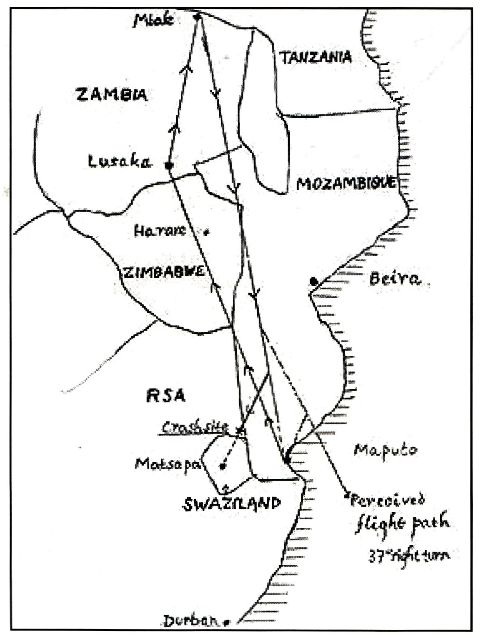
Sketch map of the last flight
of the short-haul Tupolov aircraft
carrying Mozambican President Samora Machel.
(Source: Ian Copley).
The aircraft, Charlie Nine Charlie Alpha Alpha, took off from Mbala at 18.38 on a direct return flight to Maputo, with an ETA of 21.25, local time, or about five minutes later than the actual time of the crash. There was no flight plan submitted; thus, it was an illegal flight over Zambia and Zimbabwe and there was no international advance warning of the journey.
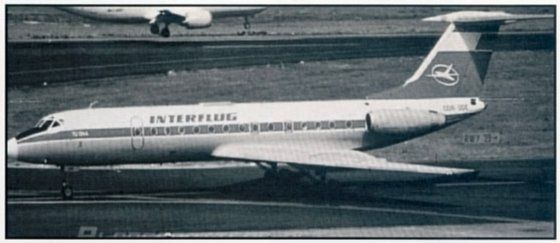
Tupolov 134A-3, Registration C9 CAA
The first radio contact with Maputo [FQMA] was at 20.46. The descent from 35 000 feet (10 668 metres) started at 21.02, the time for the first pre-landing check list that was omitted. They were to report at 3 000 feet (914,4 metres). At this level, and 113 km from its destination, Captain Navordran, according to the flight engineer, switched off the autopilot and, for some unknown reason, took over manual control. [Survivor’s reports – Internet] The aircraft would have been homing in on the Maputo VOR [Very high frequency Omni directional radio Range] beacon and was still on track for landing.
At 21.10 the navigator, the only crew member able to speak any English with which to communicate with Maputo Tower [operational until 22.00], informed the captain that a 37º turn to the right was required. When the pilot queried this, the navigator answered ‘VOR indicates that way’, which he then accepted. But, at 21.14:57, the navigator gave a distance of 60km to run, which upset the Captain, who had previously thought they would land a minute early and impress their VIP passenger. Why was there a last-minute change in the flight direction? There are some theories.
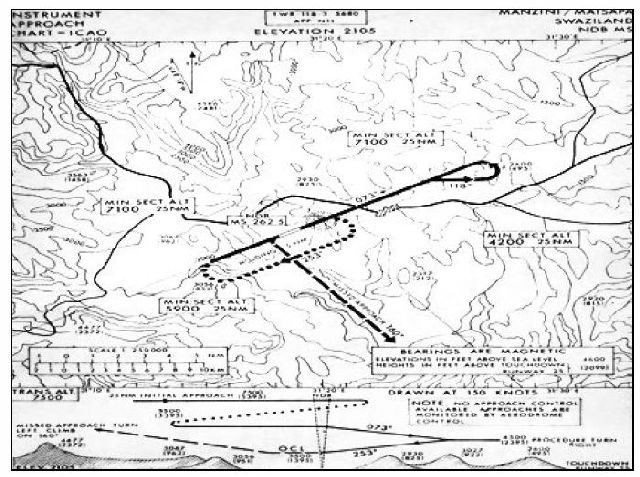
Matsapa Airport, instrument approach chart,
c1970, showing the terrain.
From the voice recording, it seemed that ‘the crew were more concerned with finishing the flight than with following standard aviation procedures and cross-checks’. The captain was busy ordering drinks from the bar with his flight engineer – ‘three beers and one coke’, presumably for after landing. Post-mortem tests on the pilots did not indicate any alcohol in their systems. (Media reports published in South Africa shortly after the accident reported that the crew members had been drinking in the cockpit).
The VOR frequency for Maputo (FQMA) is 112.7, whereas that for Matsapa (FDMS) in Swaziland is 112.3, both operational 24 hrs a day. With the Russian numerals 7 and 3 having a very similar appearance, both with a horizontal bar at the top, especially when read by cabin spotlight only, it might be argued that the navigator could have made an error in reading .3 for .7, thus misreading the Matsapa for the Maputo frequency. [Personal communication] The wrong Morse Code, MS --- for MA •–, seems a less likely explanation for the flight error. There was no instrument landing system (ILS) at Matsapa and, according to Flight Guide (July 1983, pp 63,65) the tower closed at 15.30.
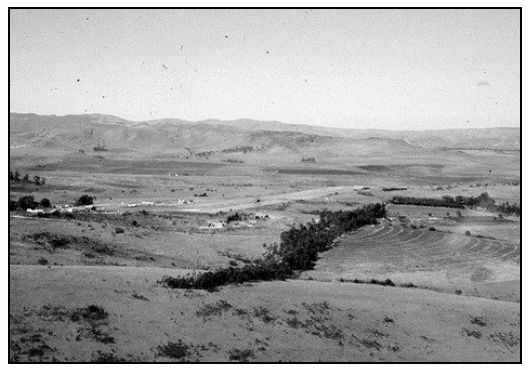
Terrain profile of the approach to Matsapa Airport, 1981.
(Photo: I Copley).
A VOR signal is akin to a lighthouse using two lights. One is always shone through 360 degrees and can be picked up by an aircraft in relation to it. A second, focused signal sweeps around the compass points at a set speed and will only be seen when it sweeps past the aircraft’s position. A VOR station provides direction guidance only and not altitude, but the distance from the beacon can be calculated. From this point, Matsapa airfield would have been further away than Maputo.
Another technical explanation as to why the change in direction occurred is that it was also possible for the navigator or co-pilot to initiate turns using the autopilot system from their positions. And they were using a poorly illuminated, antiquated navigation instrument with no back lighting of the panel. Returning to the wrong decimal point seems the most likely error and cause of the crash.
Whatever the cause, the aircraft was on a heading for Matsapa [flying at an altitude 2070 ft], separated from it by the mountainous eastern escarpment, the Lobombo Mountain chain along the South Africa, Mozambique and Swaziland border, which rises to 2 600 ft. The pilots remained in radio contact with Maputo and, during the last five minutes of the flight, were concerned about whether the runway lights were on or not at Maputo airport as they could not see any city or runway lights. Was there a power failure at the time in Maputo? There was much confusion in the cockpit, where a single Russian radio operator was attempting to communicate in English to a Mozambican traffic controller, who, I was told, had recently failed the English exam.
It was a moonless night with no thunderstorm activity and there were no lights to be seen anywhere. The pilots were expecting to be over the sea or low-lying coastline, where they would soon have to turn onto a new heading to make the landing [see Diagram]. The aircraft continued its descent. Although the weather was good, the pilots queried whether clouds might be obscuring lights on the ground. The Met reported only 3/8 cover, not enough to obscure a city’s lights. Adding to their woes, the low fuel warning light had come on permanently, leaving the captain with no alternative landing destination. The uncertainty must have increased the tension for the captain and crew.
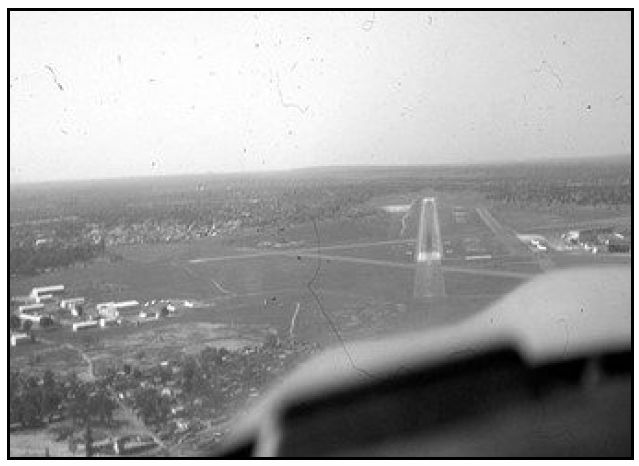
The approach to Maputo Airport, 1980.
(Photo: I Copley).
At 21.21, the terrain proximity warning sounded, but it was ignored. Instead of climbing away, the aircraft maintained its the airspeed. On the voice recorder, one can hear the captain’s breathing rate increase as his options diminished while he was still trying to make sense of the traffic controller’s instructions. Thirty seconds later, the voice recorder went quiet [Hamann, 2001, p 119 -122].
Equipment failure or human error?
At no stage during the flight had any pre-landing checklists been read out. It is interesting to note that the Tupolov website registers many crashes around the world for this model of airliner that went out of production in 1980. In the only entry under 1986 for South Africa, the cause of the crash is given as a ‘thunderstorm and failure of the terrain proximity warning’, but there was no thunderstorm activity and the terrain proximity warning could be heard on the voice recorder to the end. Instead, the crew ignored it.
In my view, apart from poor adherence to flying procedures and the incompetence of the air traffic controller in Maputo contributing to the confusion, the captain must be to blame for the crash. Had he not disconnected the autopilot as reported by the flight deck survivor, he would still have been locked on to the Maputo VOR and ILS, and the navigator would not have selected an erroneous Matsapa beacon, instead of that for Maputo. If there was a failure of navigation instruments, the captain could still have stayed on the original course using his magnetic compass.
Having flown from Lusaka to Mbala and then directly for Maputo the aircraft was approaching its maximum range of 2 770 km and was critically low on fuel, although the payload of personnel was quite small. There was insufficient fuel in the later stages of the journey for an alternative destination such as Beira, or anywhere other than in South Africa. The nearest alternative airfield was Matsapa in Swaziland.
I was told that it was Russian policy not to land aircraft at Maputo with a large amount of excess fuel, as it tended to be syphoned off for the black market. When the Maputo traffic controller lost contact with the aircraft, he informed the authorities that it was four minutes overdue.
The crash site
The crash site was near to the village of Mbuzini, south of Komatipoort, just inside a corner of the South African border with Mozambique and Swaziland. It was reported that a survivor had been to a nearby mission to ask for help.
Pik Botha, the South African Foreign Minister, was notified by telephone about the crash at 04:30. He then informed the Prime Minister, PW Botha, and was asked to visit to the crash site in person [Hamann, 2001; the times given for the voice recorder are for GMT, two hours earlier than South Africa].
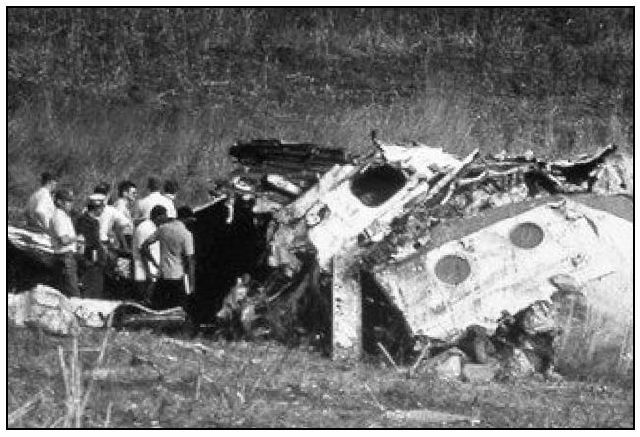
The fatal aircrash took place in South Africa,
not far from the border with Swaziland.
The police arrived at 02:00 from Komatipoort. They presumably confirmed the identity of the most important member amongst the dead, perhaps from the documents that lay scattered about the site. The crash site would have been difficult to access in the dark, as there was no fire and its location was uncertain. There was little available first aid until the arrival of a specialist medical team shortly after midnight from Hoedspruit. The injured were evacuated by helicopters from Hoedspruit Air Force Base, which reached Mbuzini at 04:00 and arrived at Nelspruit Hospital at 08:00, sunrise on that date being recorded as 05:18 local time.
His Excellency President Machel had sustained a severe, fatal head wound on impact, confirmed by the South African, Mozambique and Russian pathologists’ reports on their post-mortem examinations. Allegations that he had survived the crash and was left to pass away by the South African authorities contradicted the undisputed medical evidence and were wholly without foundation.
The Department of Civil Aviation was informed at 05:30. As is protocol with aircraft accidents, the entire area was cordoned off and nobody was allowed into the accident area. Soviet and Mozambican aviation authorities were notified by 06:00. A geological surveyor later examined the accident site. From the tree damage and the wing-tip ground scar, he determined the angle at ground impact was approximately 10° at an elevation of 2 193 feet (or roughly 685 metres) above sea level. The flaps and undercarriage were still retracted. The angle of impact suggested the aircraft was at a relatively high speed, with wings level in a shallow descent at the point of impact.
Despite insistence from the Soviet Union that the black box recorders be handed over to their team without delay, these were sealed and stored for safe keeping until a mutually acceptable neutral country could decode the CVR [voice recorder] and DFDR [concerning instruments]. Switzerland was selected as acceptable to all parties. The DFDR, however, could only be decoded in Russia and thus a dual-pronged journey was undertaken to deliver the recorders to the respective specialists in December 1986.
Accusations
Allegations surfaced soon after the crash. The Soviet Union held that there had been a deliberate sabotage of the flight using a decoy beacon. Many other excuses were also given by the Soviet investigators: that the crew had been deceived; that the crystals in the VOR at Matsapa had been tampered with; that this had been a plot by South Africa to murder Samora Machel so as to destabilise Mozambique, one of the countries supporting the military arm of the African National Congress (ANC).
There were army units in the border area at the time, but these were at a great distance from the intended direct flight path. Had South Africa been monitoring the flight on radar? Why didn’t they notify them of the danger of the new flight path?
Enquiry
At the ensuing Margo Commission of Enquiry, a board of aviation experts found no evidence of an explosion or malfunction and concluded that the crash had been due to pilot error. The findings were that a scheduled Mozambique Airlines flight was in the vicinity at the time and did not experience any navigational problems. The notion of a decoy beacon being used required the highly unlikely scenario that both the Maputo and Matsapa VOR beacons would have had to be switched off at the same time.
That there had been no flight plan submitted for search and rescue meant that there was no alternative destination for the flight. Beira, Lusaka and Harare were all too distant to be considered alternatives in the last quarter of the journey. Only Matsapa in Swaziland offered a convenient alternative destination, assuming there was sufficient fuel to get there. Interestingly, the flight path crossed Zimbabwean airspace illegally on both the outward and return journey without a flight plan.
There was no obvious gain for South Africa to be had from the death of Machel. There had been several previous attempts on his life in Mozambique, according to his wife, Graça, who was reported on radio [SAFM] as recently as 2018 as still blaming South Africa, yet there was no noticeable change in events or infiltration after the crash.
Army activities were common at the time in the border areas, however. If the deviation of the flight path had been seen on radar, there would have been only about five minutes to note the difference and give a warning. The aircraft may have been below the radar by this time as it was getting close to the ground almost below the summit of the escarpment.
Why was Mozambique only informed of the accident at about 08:00 the next morning? In view of the difficulty of locating the crash site and accessing it and then confirming the identity of the aircraft and the dead, this was not an unreasonable delay.
Conclusion
The Samora Machel crash was almost certainly a tragedy caused by human error. Despite the hunt for South African culpability in the crash – another two commissions of enquiry followed the Margo Commission at considerable expense – no conclusive or new evidence emerged to contradict the initial findings. Yet the rumours and insinuations continued to surface. Reports stated that the undercarriage was down at the time of the crash, indicating that the aircraft was preparing to land on the bogus airfield, yet there was no evidence of that at the crash site. Indeed, there were no final landing procedures initiated on the flight deck in the last five minutes; this would usually be done before landing, with the airfield in sight. Had there been a decoy beacon, one might have expected this to be done. The procedure is usually initiated when locked onto the ILS, the first beacon, about 4km from the runway threshold at the destination airport. It is very difficult to imagine how a fully equipped Soviet aircraft could be made to crash into a small corner of South Africa, and not just across the border in Swaziland.
That the sole flight deck and key witness, Vladimir Novosselov, was never called to any of the three commissions of enquiry is strange.
Mbuzini village has thrived since 1986 as there is now a large memorial to Samora Machel with a museum. Apparently, there are access roads, hotels and an ‘airport’ to serve the tourists.
Further reading
Return to Journal Index OR Society's Home page
South African Military History Society / scribe@samilitaryhistory.org